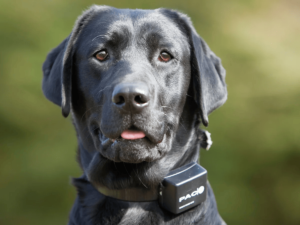In dog training, shock collars for dogs, also known as e-collars or electronic collars, have sparked significant debate. These devices are designed to deliver a mild electric shock to a dog’s neck when they display undesirable behavior. While some trainers and pet owners advocate for their effectiveness, others raise ethical concerns and question their necessity. In this comprehensive guide, we’ll explore the various aspects of shock collars, including their functionality, pros and cons, alternatives, and tips for safe use.
What Are Shock Collars for Dogs?

Shock collars are electronic devices that consist of a remote control and a receiver collar. The receiver collar, worn around the dog’s neck, delivers a static electric shock of varying intensity when activated by the remote control. These collars can be used for various purposes, such as:
- Behavior correction: Addressing issues like excessive barking, jumping, or aggression.
- Training: Reinforcing commands such as sit, stay, or come.
- Containment: Preventing dogs from leaving a designated area.
How Do Shock Collars for Dogs Work?
Shock collars work by delivering a static shock, which is intended to deter undesirable behavior. The intensity of the shock can usually be adjusted, ranging from a mild tingle to a more pronounced jolt. Most modern shock collars also offer additional modes such as vibration or sound, providing alternative ways to communicate with the dog without using the shock function.
Read More: When to Start E-Collar Training?
Pros of Using Shock Collars for Dogs
- Immediate Results: Shock collars can provide quick correction for specific behaviors, making them appealing for urgent training needs.
- Versatility: They can be used for various training purposes, from basic obedience to advanced commands.
- Remote Control: Allows for precise timing and control, which can be crucial in training scenarios.
- Adjustable Intensity: Most collars allow for customization of the shock level, which can be tailored to the dog’s size and temperament.
Cons of Using Shock Collars for Dogs
- Ethical Concerns: Many animal welfare advocates argue that shock collars inflict pain and stress, leading to potential psychological harm.
- Risk of Misuse: Inexperienced handlers may misuse the device, leading to increased fear, anxiety, or aggression in dogs.
- Limited Efficacy: Shock collars may not address the root cause of behavioral issues and can result in a dog simply becoming conditioned to the collar.
- Potential for Physical Harm: Improper use can cause physical injuries, such as burns or neck sores.
Safe Use of Shock Collars for Dogs
If you decide to use a shock collar, it’s essential to follow best practices to ensure the safety and well-being of your dog:
- Consult a Professional: Seek guidance from a certified dog trainer or veterinarian before using a shock collar.
- Proper Fit: Ensure the collar fits snugly but not too tight, and regularly check for signs of irritation.
- Start Low: Begin with the lowest intensity setting and observe your dog’s reaction before making adjustments.
- Combine with Positive Reinforcement: Use the collar in conjunction with positive reinforcement techniques to promote desired behaviors.
- Monitor Closely: Regularly assess your dog’s behavior and health to ensure the collar is not causing undue stress or harm.
Alternatives to Shock Collars for Dogs
There are several humane and effective alternatives to shock collars for training and behavior correction:
- Positive Reinforcement: Rewarding desired behaviors with treats, praise, or playtime can be highly effective.
- Clicker Training: Using a clicker to mark desired behaviors, followed by a reward, can help build a strong association.
- Head Collars: Gentle leaders or head halters can provide better control during walks and reduce pulling without causing pain.
- Citronella Collars: These collars release a burst of citronella spray instead of a shock, which can deter unwanted behaviors without inflicting pain.
- Behavioral Therapy: Working with a professional animal behaviorist to address underlying issues can lead to long-term solutions.
Conclusion:
Shock collars for dogs remain a controversial topic in the realm of pet training. While they can offer quick results and versatility, the potential risks and ethical concerns cannot be ignored. For many pet owners, exploring alternative training methods that prioritize the dog’s well-being and foster a positive relationship is preferred. Whether you choose to use a shock collar or not, it’s crucial to prioritize your dog’s physical and emotional health in any training regimen.

